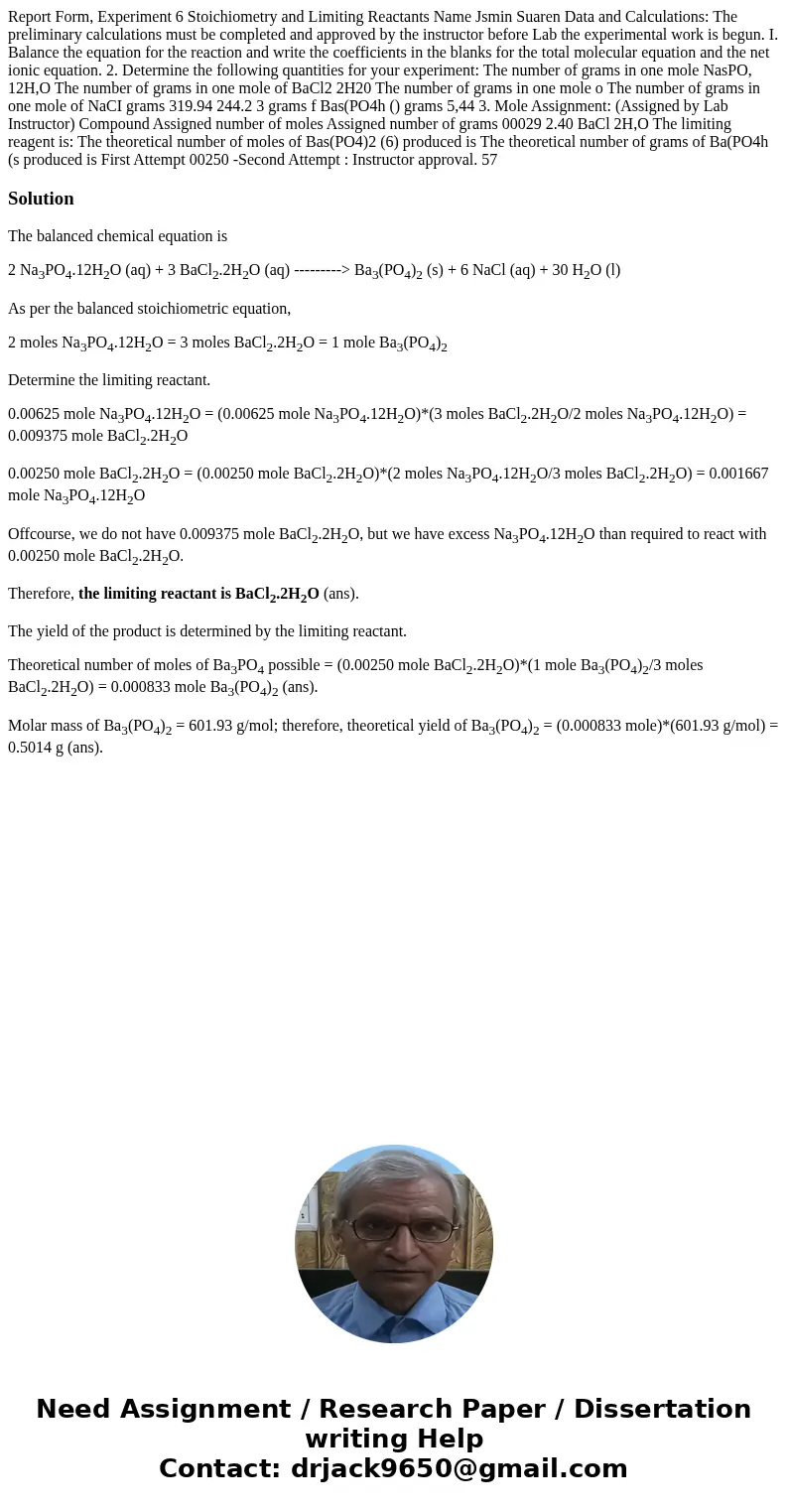Report Form Experiment 6 Stoichiometry and Limiting Reactant
Solution
The balanced chemical equation is
2 Na3PO4.12H2O (aq) + 3 BaCl2.2H2O (aq) ---------> Ba3(PO4)2 (s) + 6 NaCl (aq) + 30 H2O (l)
As per the balanced stoichiometric equation,
2 moles Na3PO4.12H2O = 3 moles BaCl2.2H2O = 1 mole Ba3(PO4)2
Determine the limiting reactant.
0.00625 mole Na3PO4.12H2O = (0.00625 mole Na3PO4.12H2O)*(3 moles BaCl2.2H2O/2 moles Na3PO4.12H2O) = 0.009375 mole BaCl2.2H2O
0.00250 mole BaCl2.2H2O = (0.00250 mole BaCl2.2H2O)*(2 moles Na3PO4.12H2O/3 moles BaCl2.2H2O) = 0.001667 mole Na3PO4.12H2O
Offcourse, we do not have 0.009375 mole BaCl2.2H2O, but we have excess Na3PO4.12H2O than required to react with 0.00250 mole BaCl2.2H2O.
Therefore, the limiting reactant is BaCl2.2H2O (ans).
The yield of the product is determined by the limiting reactant.
Theoretical number of moles of Ba3PO4 possible = (0.00250 mole BaCl2.2H2O)*(1 mole Ba3(PO4)2/3 moles BaCl2.2H2O) = 0.000833 mole Ba3(PO4)2 (ans).
Molar mass of Ba3(PO4)2 = 601.93 g/mol; therefore, theoretical yield of Ba3(PO4)2 = (0.000833 mole)*(601.93 g/mol) = 0.5014 g (ans).

 Homework Sourse
Homework Sourse